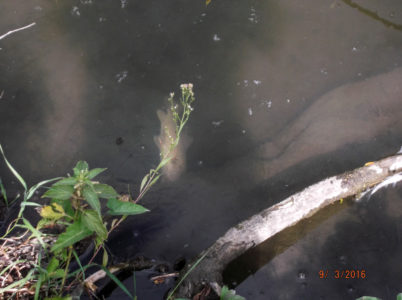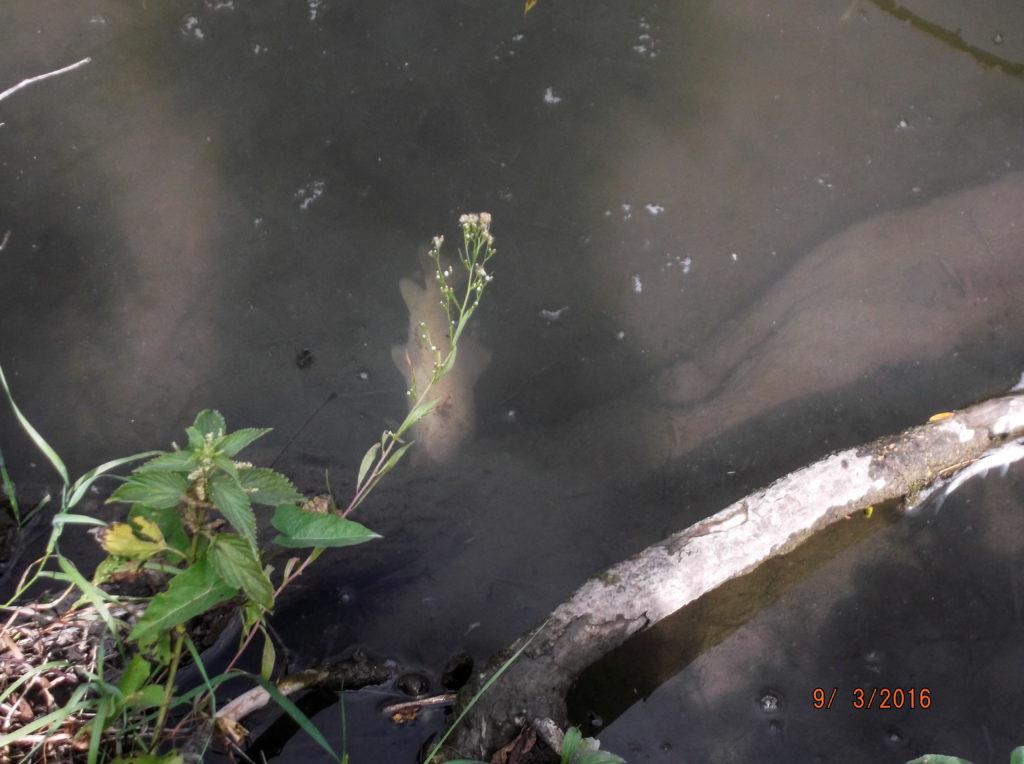
By Julia Echikson
echikson@grinnell.edu
After receiving a call about dead fish along Wolf Creek in Jasper County, Bill Gibbons, an environmental specialist at the Iowa Department of Natural Reserves (DNR), went to investigate. Upon his arrival, he measured the level of the fertilizer ammonia in the water and found the ammonia levels to be so high that he couldn’t get a reading.
“They’re above the capability of my kit to measure,” he said. Finishing with inspection, the DNR found the ammonia leak had killed 66,500 fish.
The DNR believes last week’s leak stemmed from a tile line coming into the creek. Tile lines are used for draining farm land of wastewater. As Gibbons inspected the creek, he noticed how there were dead fish downstream of tile and live meadow upstream.
The DNR does not know who caused the leak or where it began. Gibbons looked into farm fields near the spillage and an agriculture cooperation in Collins, where the tile line extended, but could not find any evidence of a spill. Ultimately, the leak could have come from other counties, miles away.
To prevent such leaks from happening again, Bill Stowe ’81, who works for Des Moines Water Works a company that provides clean drinking water. He recommends finding the culprit and making an example of them.
“[Law enforcement should be] fully enforcing the existing regulations,” Stowe said. These regulations are largely composed of fines.
“Regulations should allow for escalations of penalties and fines, if there is a future violation,” Stowe elaborated.
But, that scenario is unlikely.
“Some of those tile lines can go long distances,” Gibbons explained. The extent of the farming irrigation system makes it hard to locate what caused the leak.
“Failure of tile line is a failure of either inspection or lack of protection,” he said. “The state has history of lax regulation.”
This is due to the state’s economy being entrenched in farming and ammonia being a crucial ingredient.
Despite the death of so many fish, the ammonia leak spared everything else in its path. Gibbons claimed the effects of the leak were “pretty localized.”
No crops were harmed due to the ammonia leak. With harvest season nearing and due to the breeds of plants farmed, crops were mature enough to resist the effects of ammonia. As the water from Wolf Creek entered Indian Creek, a larger waterway, the ammonia became diluted, and its level became insignificant. Gibbons says he couldn’t find large traces of ammonia in Indian Creek. As of now, the DNR is taking a hands off approach in cleaning the creek.
“Natural processes will take place,” Gibbons explains. “There isn’t going to be any active clean up in the creek.”
As the creek’s surroundings were unharmed, the DNR will not take further action that could disrupt the environment. They expect the same process that diluted the ammonia in Indian Creek to resolve any issues that would arise.
Stowe’s business of providing clean water has been affected.
“[Ammonia] triggers a need for additional use of disinfected to treat drinking water. More disinfected means more percentage in risk,” Stowe said.
Not all ammonia leaks have had so much mercy. According to press reports, an ammonia leak at the PurService food service plant in Grinnell about a year ago sent almost a dozen people to the hospital, a few of whom had severe breathing difficulties. Crews later determined ammonia leaked from a refrigeration unit in the plant. This past May 11, chicken farm employees were treated for ammonia exposure near George, Iowa.
Ammonia remains an integral part of agriculture and farming in Iowa, as it provides sanitation and fertilization for both industries.
Political pressure can make it difficult to propose and pass legislation that would monitor and prevent leaks into bodies of water.
As of now, there is no regulation on the wastewater that comes from agriculture and farming.



















































